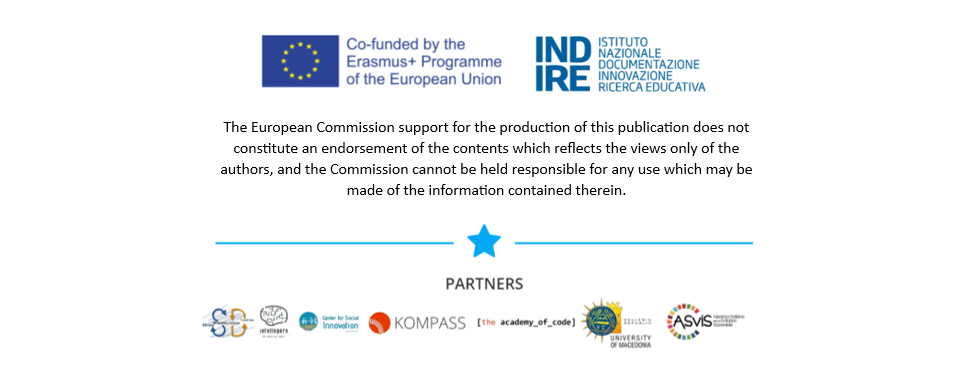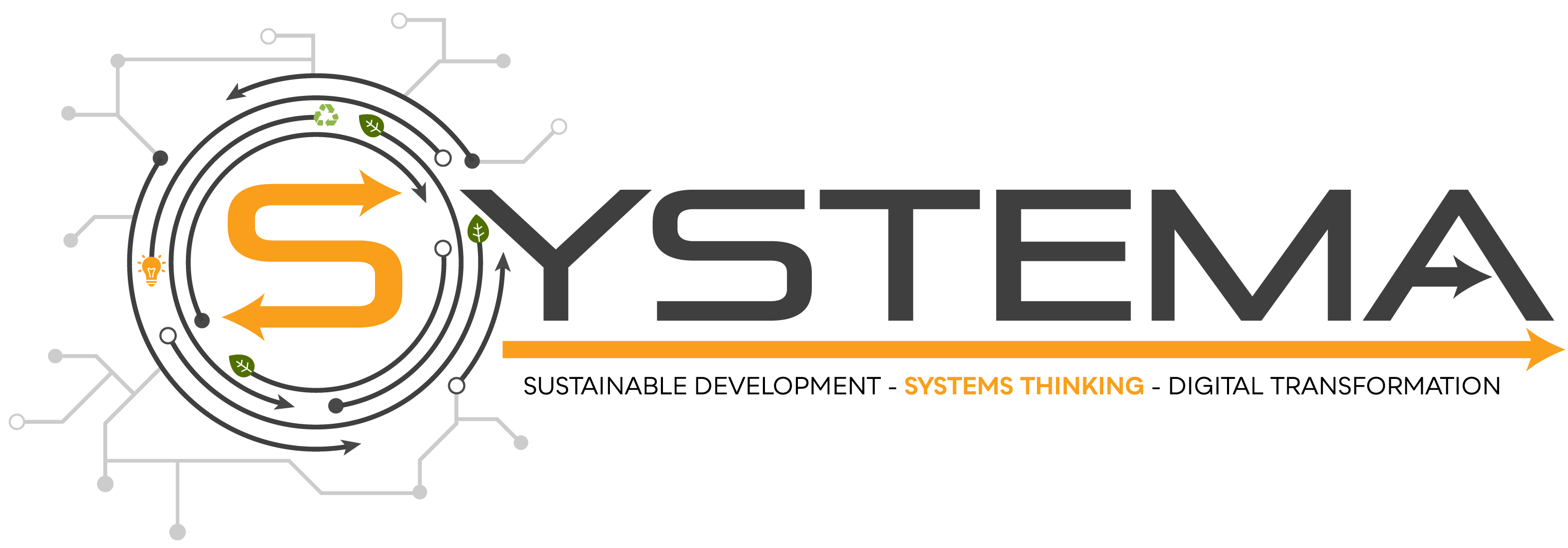Introduction
In Europe, the implementation of e-Government has required the dematerialization of all documents and the redesign of all organizational processes to increase efficiency through cost reduction and rise effectiveness by improving the services offered. Besides, in the last three years, some new educational activities aim to meet the training needs of public administrations, companies, and other organization which plan to acquire or train the profiles of the Digital Transition Manager and the Manager of Documents Management System, providing innovative knowledge on organizational, technological, and legal skills.
To better understand how dematerialization implied a digital transformation and, therefore a more substantial effect on the Italian Public Administration’s organizational processes, we use Systems Thinking (ST) and System Dynamics (SD) approaches. In particular, the purpose of our research is to highlight, in the context of a systemic approach to digital transformation through the right training activities, modeling and simulation, the advantages that Public Administrations can carry out.
Definitions
Digital transformation is the integration of digital technology into all areas of a business, fundamentally changing how to operate and deliver value to customers. It is also a cultural change that requires organizations to continually challenge the status quo, experiment, and reach results. To better understand the organizational impacts of dematerialization in PAs, and its enabling effect on the overall digital transformation, we choose to use a systemic perspective which is provided by the System Dynamics modeling and simulation approach.
Based on Systems Theory and System Thinking, System Dynamics (SD) is a computer-based modeling and simulation approach that allows defining the mathematical relations between different variables and instructs a computer to make the discrete-step computational effort of solving the differential set of equations. The trends of all variables out of computer simulations are plotted over a specified period into the future. The validation of the model is based on historical data and sensitivity analyses. SD provides an understanding of the overall performance behavior of the system and the influence of the various factors to the problem to support policy design by making simulations of different scenarios.
Systems Thinking is a way of looking at systems from a holistic point of view. Its purpose is to determine what is the system’s structure and in what way the structure affects its behavior over time. Systems Thinking expands the range of choices available for the solution of a problem, expanding our capacity for analysis and articulation in an innovative and different way. At the same time, the principles of systemic thinking make us aware that there are no optimal or even perfect solutions: the choices we make will impact other parts of the system.
Systems Thinking into Digital Transformation
The process of digital transformation should be guided by a "holistic" approach, which can make a whole more than the sum of its parts. The use of System Dynamics allows a different approach to the analysis, over time, of the functioning of complex systems and their formalization, since it is able to manage intrinsic characteristics of real-world systems, such as non-linearity, presence of delays, self-organization, dependencies on past behavior, feedback processes and resistance to change. Thanks to these features, the SD and ST approach will allow for the definition and analysis of simulation results of a digital transformation process like document management, hence proving to be versatile and representative of operating methods, also related to non-homogeneous organizational structures. In other words, through a systemic approach, it is possible to capture the complexity of the PAs and, therefore, the behavioral dynamics of these organizations.
It becomes therefore necessary to operate a cognitive leap that allows us to move from the approach oriented to the efficient production of effective objects (design thinking) to an approach of thought that makes us question the ultimate ratio of the same object, the need for that object or that specific end, to evaluate ex-ante the actual value in the future of the organization: Systems Thinking (or Systemic Thinking).
Practical applications
With the partnership of Infocert S.p.A., a leading company in the digitalization services market, we have defined and analyzed the document management process of the Public Administration. We designed two SD models representative of the management of the generic document process. The first model, called “As-Is”, represents the situation in which the reference organization operates, is a traditional model of “paper- intensive,” where there is no implementation of solutions for the dematerialization of document management. The second model, called “To-Be”, describes the future situation. The “To-Be” model represents the situation in which an organization should tend to optimize its processes and sub-processes by increasing its performance. The results of simulation showed that the reduction in total costs of documents management process, when comparing the “As-Is” to the “To-Be” is almost 60%.
Another paradigmatic example is the case of IKEA, which has been applying design thinking for years to product development and customer showroom experience design. IKEA has redesigned these processes with a systemic approach to connect the front-end experience with back-end operations, thus gaining advantages in terms of organization and user experience and characterizing itself as a company that has the ambition to become increasingly socially responsible.
Conclusions
The use of digital tools allows changes in the way public administrations deliver their activities, communicate, and provide services, but can also have a much more extensive impact such as changing the structure and culture of an organization, or engaging and integrating citizens and other partners into the co-design and co-delivery of public services.
Through a systemic approach, aimed at modelling and simulating the As-Is (paper) versus To-Be (digital) document workflow, we are able to assess the savings that are obtainable in a small context and that hence preludes to the wider savings that can be achieved from public administrations. Although it represents only a small improvement that can be implemented in the digital reengineering of administrative processes, dematerialization is a goal that could be achieved quickly. Digitalization, for its cross-cutting importance, is in fact nowadays present in a stable form into many aspects of the public system and that is why it is necessary to operate it with even more significant policy aimed at raising awareness of the use of the public digital transformation. In conclusion, our research confirms once again that the paper digitalization is a major challenge for the benefits that public administrations can realize but of course is just a single step (though pretty relevant) on their path to digital transformation. A continuous specific training activity will be needed to train Digital Transition Managers considering that such profiles need to have a systemic perspective and systemic skills like Systems Thinking with also others focus on the tools, like decision support systems that the public sector is slowly adopting to improve its performances and offer better services to citizens.
References
• Akkermans, H., Dellaert, N.: The rediscovery of industrial dynamics: the contribution of system dynamics to supply chain management in a dynamic and fragmented world. Syst. Dyn. Rev. 21(3), 173–186 (2005)
• Armenia, S., Canini, D., Casalino, N.: In: D’Atri, A., De Marco, M., Casalino, N. (eds.) A System Dynamics Approach to the Paper Dematerialization Process in the Italian Public Administration, pp 399–408 (2008)
• Armenia, S., Casalino, N., Gnan, L., Flamini, G.: A systems approach to the digital transfor- mation of public administration. In: Prospettive in Organizzazione “Le Sfide del Management Pubblico: Nuovi Modelli Organizzativi, vol. 14 (2020)
• Armenia, S., Roma, L., Perugia, A.: A new system dynamics model for the analysis of the paper digitalization process in the Italian Public Administration. In: Proceedings of 26th International Conference of System Dynamics Society. Athens, Greece (2008)
• Armenia, S.: Smart model-based governance: taking decision making to the next level by integrating data analytics with systems thinking and system dynamics. In: New Challenges in Corporate Governance: Theory and Practice, Virtus Enterprises, pp. 41–42 (2019)
• Art. 7 del Codice dell’Amministrazione Digitale (CAD), adottato con d.lgs. 7 marzo 2005, n. 82, modificato con i decreti legislativi n. 179 del 2016 e n. 217 del 2017,
• Berman, S., Kesterson-Townes, L., Marshall, A., Srivathsa, R.: The power of cloud—driving business model innovation. IBM Institute for Business Value, New York, USA (2012)
• Casalino, N., Armenia, S., Draoli, M.: A System Dynamics Model to Identify and Measure the Paper Digitalization Advantages in Public Administration, pp. 29–36. Physica-Verlag, Springer, Heidelberg, Germany (2010)
• Casalino, N., Armenia, S., Medaglia, C.M., Rori, S.: A New System Dynamics Model to Improve Internal and External Efficiency in the Paper Digitization of Italian Public Administrations. European Academy of Management. EURAM (2010)
• Casalino, N., Zuchowski, I., Labrinos, N., Muñoz Nieto, A.L., Martín-Jiménez, J.A.: Digital strategies and organizational performances of SMEs in the age of Coronavirus: balancing digital transformation with an effective business resilience. Law Econ. Yearly Rev. J. LEYR (Queen Mary University, London, UK) 8(part 2), 347–380 (2019)
• Casalino, N.: Learning to connect: a training model for public sector on advanced e-government services and inter-organizational cooperation. Int. J. Adv. Corp. Learn. (iJAC) Austria 7(1), 24–31 (2014)
• Davenport, T.H.: Process Innovation: Reengineering Work Through Information Technology. Harvard Business Press (1993).
• Donella Meadows (2019) “Pensare per Sistemi – Interpretare il presente orientare il futuro verso uno sviluppo sostenibile”. Milano, Guerini Next, ISBN: 9788868961114 https://guerini.it/index.php/pensare-per-sistemi.html
• Fitzgerald, M., Kruschwitz, N., Bonnet, D., Welch, M.: Embracing digital technology: a new strategic imperative. MIT Sloan Manag. Rev. 55(2), 1 (2014)
• Hess, T., Matt, C., Benlian, A., Wiesböck, F.: Options for formulating a digital transformation strategy. MIS Quart. Execut. 15(2) (2016)
• Hinings, B., Gegenhuber, T., Greenwood, R.: Digital innovation and transformation: an institutional perspective. Inf. Organ. 28(1), 52–61 (2018)
• Il Ministero per la Pubblica Amministrazione, tramite la Circolare n. 3 del 2018 ha ribadito l’obbligatorietà per tutte le amministrazioni, di individuare un ufficio per la transizione al digitale – il cui responsabile è il RTD – a cui competono le attività e i processi organizzativi ad essa collegati e necessari alla realizzazione di un’amministrazione digitale e all’erogazione di servizi fruibili, utili e di qualità.
• Martinez, M., Di Nauta, P., Sarno, D.: Real and apparent changes of organizational processes in the era of big data analytics. Stud. Organ. 2 (2017)
• Mergel, I., Edelmann, N., Haug, N.: Defining digital transformation: results from expert interviews. Gov. Inf. Quart. 36(4) (2019)
• Nambisan, S., Lyytinen, K., Majchrzak, A., Song, M.: Digital innovation management: reinventing innovation management research in the digital world. MIS Q. 41, 223–236 (2017)
• Nograšek, J., Vintar, M.: E-government and organizational transformation of government: Black box revisited? Gov. Inf. Q. 31(1), 108–118 (2014)
• O’Connor, J., McDermott, I.: The Art of Systems Thinking. Thorsons, San Francisco (1997)
• Rieger, A.: Does ICT result in dematerialization? The case of Europe 2005–2017. Environ. Soc. 1–12 (2020)
• Sprague, R.H.: Electronic document management: Challenges and opportunities for informa- tion systems managers. MIS Quart. 29–49 (1995)
• Sterman, J.D.: Business Dynamics. Systems Thinking and Modeling for a Complex World. McGraw-Hill, New York, NY (2000)
• Van der Voet, E., van Oers, L., Nikolic, I.: Dematerialization: not just a matter of weight. J. Ind. Ecol. 8(4), 121–137 (2004)
• Weerakkody, V., Janssen, M., Dwivedi, Y.K.: Transformational change and business process reengineering (BPR): lessons from the British and Dutch public sectors. Gov. Inf. Q. 28(3), 320–328 (2011)
• Yoo, Y., Boland, R.J., Lyytinen, K., Majchrzak, A.: Organizing for innovation in the digitized world. Organ. Sci. 23(5), 1398–1408 (2012)

